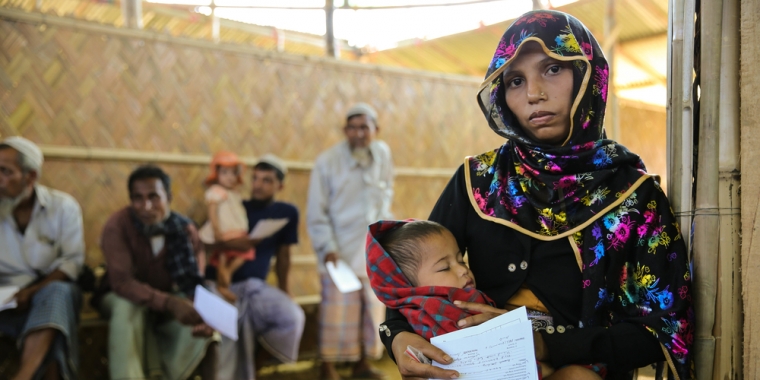Diphtheria: A Disease of the Past Poses a New Threat
YemenExtra
SH.A.
Diphtheria is a disease of the past in most countries, given you can vaccinate against it and treat it. It was a disease that I had been taught at medical school and not one I ever thought I would see in person over the course of my career.
Despite being a preventable disease, diphtheria outbreaks have recently been reported in Yemen and Venezuela.
Both countries have extensive instability disrupting their health systems, which leads to limited or no access to vaccinations. Now, diphtheria is very much present among the Rohingya population in Bangladesh.
The Rohingya are a largely unvaccinated population that is now living in overcrowded, precarious makeshift settlements since fleeing Myanmar.
One Case
I was away when the first diphtheria case presented at the Kutupalong clinic. The doctor on duty diagnosed it, reported it, and started treatment. Unfortunately, the patient left and never came back.
Over a week later we had our second case: a young boy who presented with swelling of the neck, fever, sore throat, and, upon examination, a pseudomembrane (a thick, gray layer of debris covering the throat).
This was the first case I had ever seen; it was textbook diphtheria. We admitted him to an isolation room and started treatment.
We prescribed antibiotics, and, although I was concerned it may obstruct his airway, with limited resources we had no other choice. We continued to monitor him as he remained in isolation.
Over the next few days, the boy showed signs of improvement: the swelling in his neck went down; he was able to swallow and started to eat.
We arranged for his parents and seven brothers and sisters to get prophylactic antibiotics and vaccinations.
The prognosis was looking positive until one morning the boy’s heart rate dropped critically. We tried everything we could to bring his heart rate up but, unfortunately, he died of cardiac failure, which had likely developed as a result of diphtheria toxin produced by the bacteria.
The toxin can significantly affect the heart, kidneys, and central nervous system. It can be treated with an anti-toxin but this wasn’t available in Bangladesh.
High Fatality Rate
We started seeing a steady stream of two cases per day. The fatality rates were high, with patients presenting too late with severe symptoms; many with near-airway obstruction on arrival.
It was easy to imagine the future scale of the problem as the patients were all from families of 10 or more living in a single shelter in the camp.
Add to this the fact that everyone we were seeing hadn’t been vaccinated during childhood. These are all ideal conditions for a disease spread by respiratory droplets to propagate.
The number of cases increased rapidly. The Kutupalong clinic was already overwhelmed with patients and not designed for the number of admissions needing isolation. Our inpatient capacity had already risen from 70 beds when I arrived nine weeks ago to more than 100 beds.
Luckily, this is the sort of emergency crisis that MSF is known for. A decision was made to move all cases of diphtheria to MSF’s other clinic in Balukhali makeshift settlement. This was a mother and child facility which had only recently adapted to pre-emptively respond to potential hepatitis E cases. It was quickly turned into a diphtheria isolation ward.
Many similar cases are encountered in Yemen.

